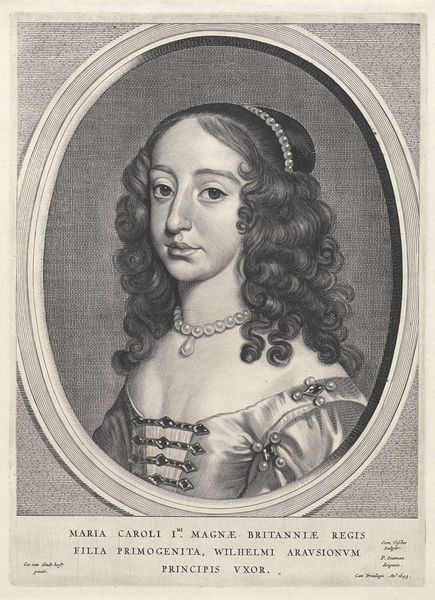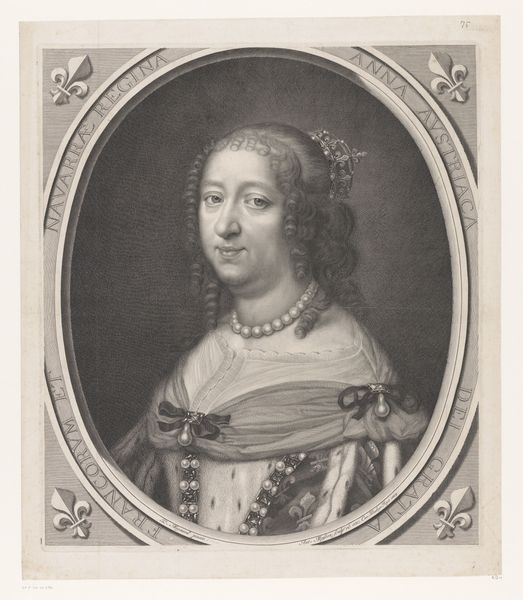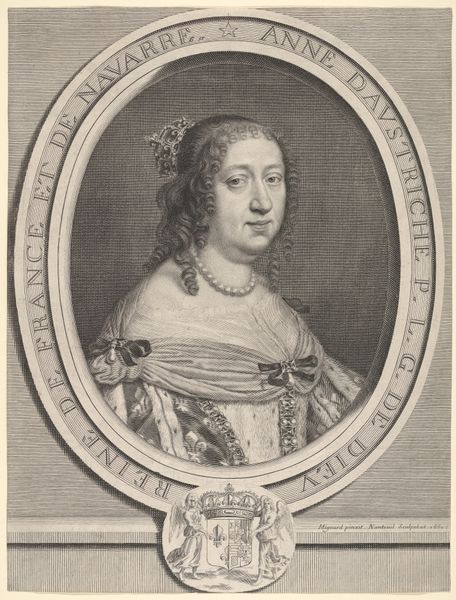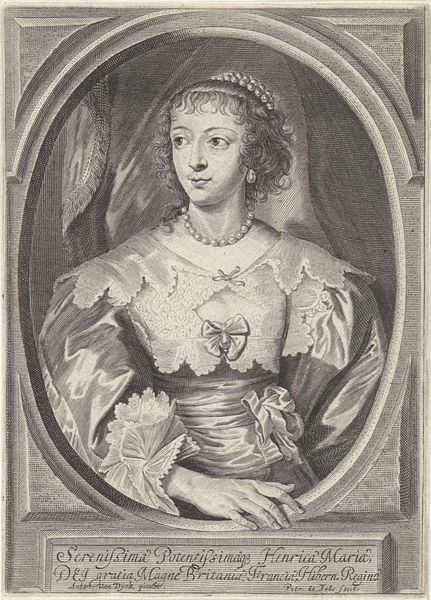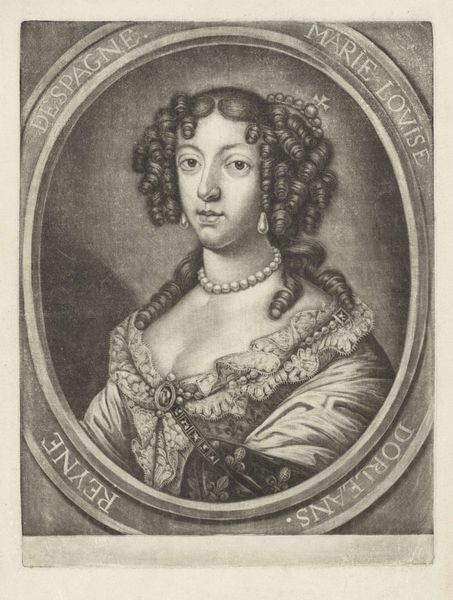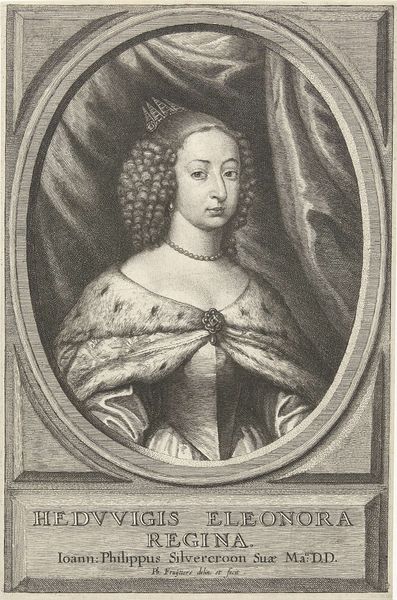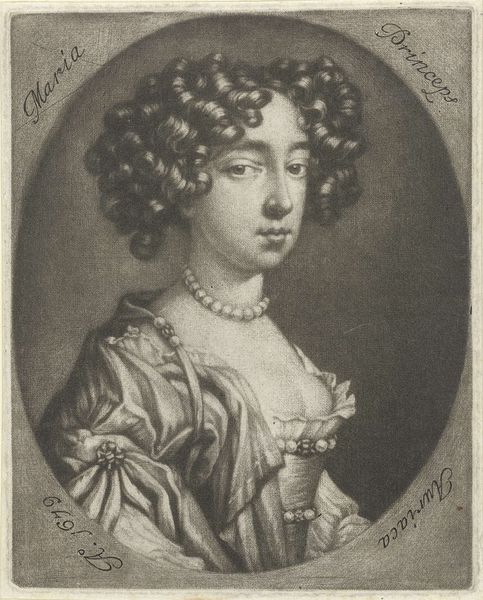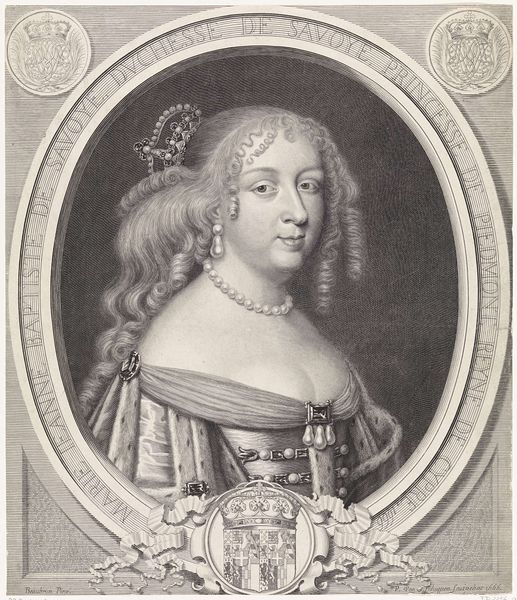
engraving
#
portrait
#
baroque
#
portrait drawing
#
history-painting
#
engraving
#
realism
Dimensions: height 397 mm, width 269 mm
Copyright: Rijks Museum: Open Domain
Curator: This is a portrait of Queen Henrietta Maria of England, an engraving by Jonas Suyderhoef, dating from around 1644 to 1650. Editor: The first thing I notice is how ornately she's framed. The floral and curtain details feel almost suffocating around the somber queen. Curator: I agree, it’s striking. Think about the social context here. Engraving as a medium meant accessibility – this image could be widely distributed, shaping public perception. Consider the labor involved in creating such detailed line work for mass production. Editor: And the image itself – she’s surrounded by these lush symbols of fertility and perhaps earthly delights, a stark contrast to her known piety. It feels like a strategic effort to reframe her image during a politically turbulent time. I am very interested in how the crown at the very bottom centre the iconographic aspect around the regality and status. Curator: The queen, the materials of her dress, the pearls– each conveys status, each purchased, each a part of an economic system of luxury during the mid-17th century. Her face is somber, yet everything around it screams wealth, privilege and almost an industrial display that comes across almost impersonal when seen from today's perspective. The choice of rendering her this way using printed methods offers a level of separation between the representation of the monarch and its audience. Editor: Absolutely, and the choice of these symbols reinforces not only her power but the expectations tied to it – fertility, beauty, and a divine right to rule. What are the visual codes reinforcing what qualities are expected to a leader? I suspect the rose garlands, as well as her pearl necklace serve not just decorative purposes but cultural expectations about queens as female rulers. Curator: Exactly, the cultural coding is completely artificial. And there is tension when seeing art as something commercial and full of coded messaging. This work blurs lines between artistic expression and practical functionality: luxury item, historical record and propagandist tool at once! Editor: Ultimately, images like this hold more than just aesthetic value. They condense so much cultural and political history. Curator: I concur! Studying artworks that allow a view into manufacturing and consumption trends and values in a society becomes a rewarding exploration that yields both knowledge and inspiration!
Comments
No comments
Be the first to comment and join the conversation on the ultimate creative platform.
